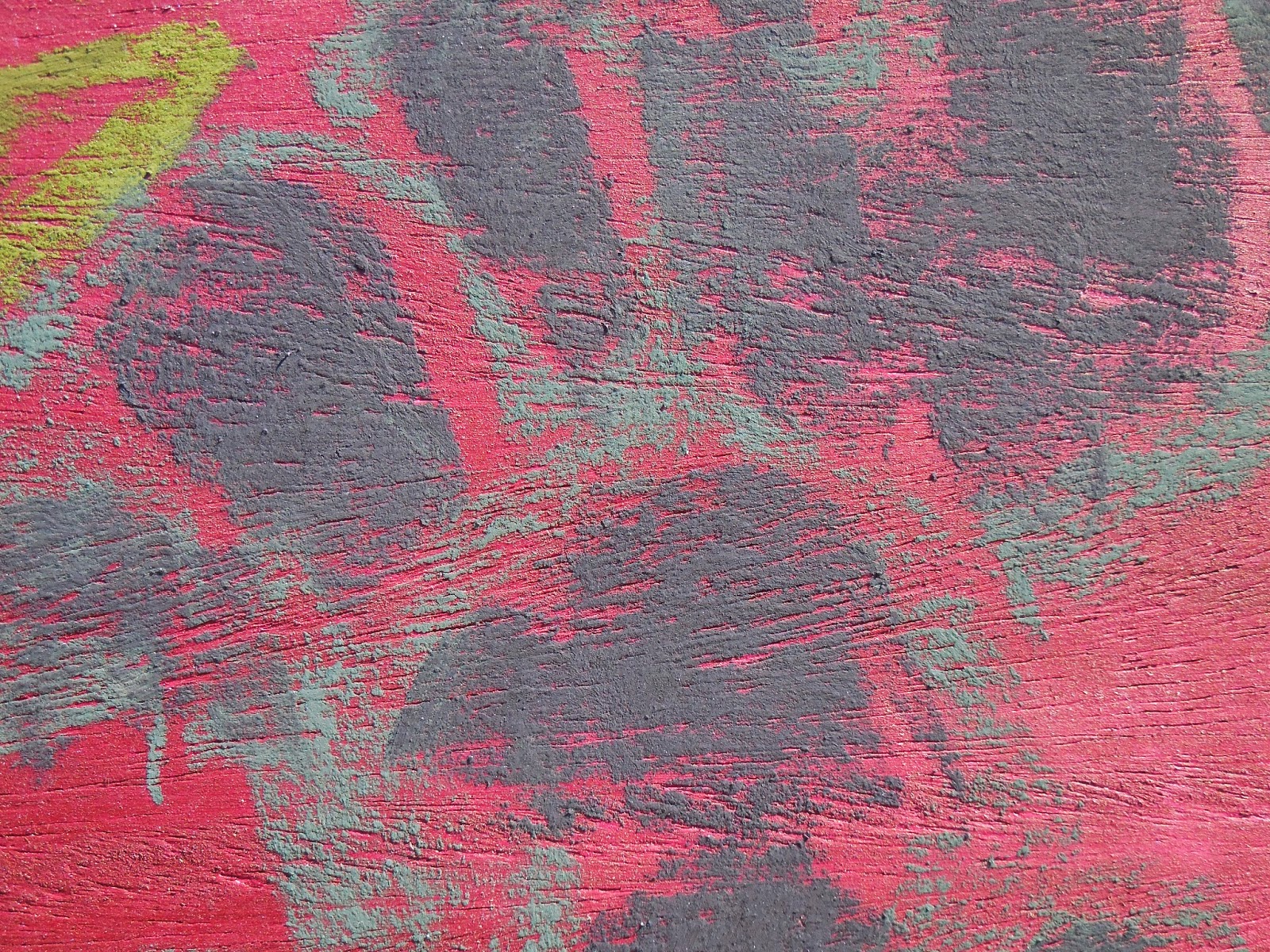The surface quality of my plein air painting is a critical part of my process. Every aspect of my painting process involves a thoughtful concern for the surface structure and support. It is literally the foundation for my creation.
Exposed board representing darker values within the painting.
The grain influencing the overall texture within the painting.
My first consideration for a painting is the location and the composition. I am trying to anticipate what my painting will be about before I leave the house. I consider the light and atmosphere, the time of year and the time of day, and I try to determine the main color scheme of the painting. I pull all of these possibilities together and start making decisions.
Colors influencing colors. The reaction of one color against another color creates a series of color decisions. In this way the underpainting shapes the color scheme of the entire painting.
As I process all of this information I decide whether to paint on a board or on sanded paper. I will choose to paint on a board about 95% of the time. The factor determining whether to paint on paper or board usually revolves around time. It takes a lot longer to build my painting on paper because I start with a detailed underpainting in water colors. The other considerations are the weather conditions and the length of distance from the car to the painting location.
The nature of my painting revolves around instinctive color choices. These color choices are tied to my unique way of seeing the landscape. Whatever color I choose for the board influences all of the color choices I make as I am painting. In addition to influencing my color choices, the underpainting also effects the way the colors appear on the board. In a way this extends and changes my pallet of colors for each painting. As important as the color choices are, the mark making choices complement them if I am doing it right. The use of sanded plywood enhances my ability to unique mark making.
Everything coming together within the detail of the painting.
What started out as an inexpensive way to build pastel supports has turned into an integral part of my art creation. My board making process has evolved over the last couple of years. I have worked my way through masonite, luan, red oak, and ended up with a sanded, good two side plywood.
The ingredients to my painting structure: pumice gel and acrylic paint.
Acrylic pumice gel mixture, a 3 inch house paint brush and sanded plywood ready for prepping.
Here is my mixture before it is mixed together. I am constantly playing with the ratios of colors and pumice gel.
I go to the local Home Depot and pick out several straight 4'X 8' sheets of plywood with a minimum amount of defects. I pay close attention to the overall straightness, warp, splits, gaps, and the grain of the plywood. I have the lumber associate cut them down into 2'X 3' sizes for the most part. I prepare the boards I am going to paint on the morning of my painting. I will pick the colors of acrylic paint I am going to mix with the fine grain pumice gel from Golden. I am constantly changing up the mixtures and combination of paint and pumice gel. The grain of the wood and the grit of the pumice gel create a unique surface that I am able to change based on mood, subject, or level of interaction I want to create.
Here is the color as it appears on the board.
Sometimes I will leave chunks of paint unmixed within the paint tray. This helps create interest within the underpainting. It can create a subtle variegation. I also experiment with the opacity of the underpainting. The less opaque mixtures have a glow that comes from beneath the surface.
Here I am trying to show the color / value difference possible with my board preparation. The variety of values and colors at my disposal for my underpaintings extends my pallette dramatically.
The value of the color of my underpainting is another key aspect to the surface interest I am trying to create in my paintings. Generally, I will pick a underpainting value that is light, medium, or dark. Each value choice influences the way I am trying to paint. If I am painting on a middle value board, I will work in both value directions to build up to my finish. I will leave parts of the board untouched to represent that specific value in the composition. This choice gives me the most options. When I am painting on a lighter value board I will generally work from the darkest values to the lightest. In this case, when possible, I will leave the untouched board as the lightest value / color in the painting. Painting on the darker value boards allows me to create dramatic landscapes. The exposed board represents the darkest shadows within the painting.
In this photo you can see the influence of the underpainting in areas that are for the most part completed. You can also see how I use the exposed areas in the background as the darkest value within the background.
Normal mark making becomes more interesting with the interplay of the grain on the board.
The visibility of the grain and the exposure of the underpainting changes the color being put down and adds character and complexity to the colors.
My reaction to the colors as they are put down on the board influence each successive color decision.
Marks made on the surface become more individualistic on this surface. The unpredictability of the grain becomes another foil that I interact with.















No comments:
Post a Comment